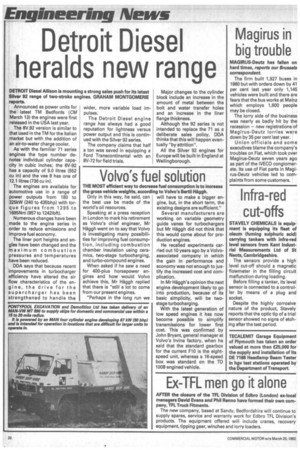Volvo's fuel solution
Page 16

If you've noticed an error in this article please click here to report it so we can fix it.
THE MOST efficient way to decrease fuel consumption is to increase the gross vehicle weights, according to Volvo's Bertil Hiiggh.
Only in this way, he said, can the best use be made of the world's oil resources.
Speaking at a press reception in London to mark his retirement as Volvo's chief engineer, Mr Haggh went on to say that Volvo is investigating many possibilities for improving fuel consumption, including combustion chamber insulation using ceramics, two-stage turbocharging, and turbo-compound engines.
When asked if he saw a need for 400-plus horsepower engines and how would Volvo achieve this, Mr Haggh replied that there is "still a lot to come from our present engines.
"Perhaps in the long run we will have to make a bigger engine, but, in the short term, the existing designs are sufficient" Several manufacturers are working on variable geometry guide vanes for turbochargers but Mr Haggh did not think that this would come about for production engines.
He recalled experiments carried out 10 years ago by a Volvoassociated company in which the gain in performance and economy was not enough to justify the increased cost and complication.
In Mr Haggh's opinion the next engine development likely to go into production, because of its basic simplicity, will be twostage turbocharging.
With the latest generation of low speed engines it has now become possible to simplify transmissions for lower first cost. This was confirmed by John Bryant, general manager at Volvo's Irvine factory, when he said that the standard gearbox for the current F10 is the eightspeed unit, whereas a 16-speed box was standard on the TD 100B engined vehicle.
















































